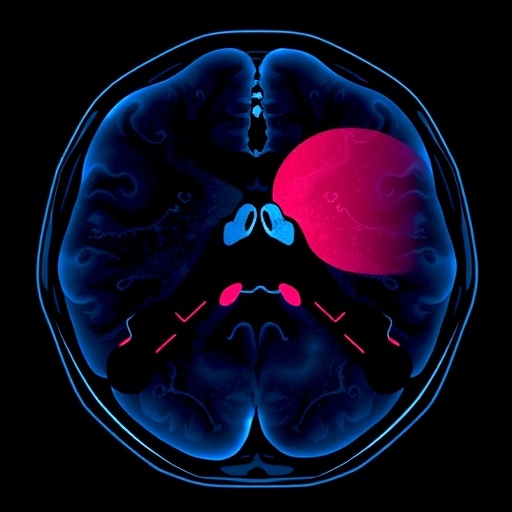In a groundbreaking advancement that could redefine prostate cancer diagnostics, researchers have developed an automated machine learning model capable of detecting prostate cancer and predicting Gleason scores solely using T2-weighted magnetic resonance imaging (T2WI). This multi-center study, recently published in BMC Cancer, showcases the immense potential of non-invasive imaging combined with artificial intelligence to transform how clinicians evaluate tumor aggressiveness without the inherent risks of biopsy procedures.
Prostate cancer remains one of the most prevalent malignancies affecting men worldwide, with its early and accurate detection being vital for optimal treatment outcomes. Traditionally, risk stratification hinges on the Gleason score, derived from prostate biopsy samples. However, biopsy is invasive and fraught with challenges such as sampling errors and procedural complications. Addressing this clinical gap, the research team harnessed the power of automated machine learning (auto-ML), employing a single imaging modality—T2WI—to create a robust, non-invasive diagnostic tool.
The study utilized MLJAR, an automated machine learning platform, to analyze MRI scans from an internal dataset consisting of prostate cancer patients who underwent imaging prior to biopsy, surgery, or other therapies. This cohort included 489 individuals, with 291 diagnosed with prostate cancer and 198 without, ensuring a comprehensive representation of cases. Notably, the datasets used for external validation extended the study’s reach, drawing from another medical center as well as a publicly available challenge dataset, comprising 45 and 68 prostate cancer cases respectively.
A pivotal part of the investigation involved rigorous statistical methods to ascertain the model’s diagnostic accuracy. The Kolmogorov–Smirnov curve assessed the model’s capability to distinguish risk groups, while the receiver operating characteristic (ROC) curves provided detailed insights into sensitivity and specificity through area under the curve (AUC) metrics. The results were nothing short of remarkable, particularly within the internal test cohort, where prostate cancer detection achieved an AUC of 0.99—an indicator of near-perfect discriminatory power.
Beyond detection, the auto-ML model’s ability to non-invasively predict detailed Gleason scores signified a major leap forward. In the internal-testing cohort, the AUC values for various Gleason score subtypes ranged from 0.87 to a flawless 1.0, demonstrating exceptional precision in differentiating tumor grades—critical for personalized treatment planning. The external validation cohorts mirrored these promising outcomes, with slight variations in AUC values but consistently high diagnostic performance, reinforcing the model’s generalizability across clinical settings.
The integration of automated machine learning into prostate cancer imaging workflows holds transformative implications. Unlike traditional radiological assessments that require expert interpretation and often struggle with subjective variability, this approach standardizes and optimizes data analysis. By leveraging T2-weighted images alone, the methodology simplifies imaging protocols, potentially reducing costs and streamlining patient management while maintaining clinical efficacy.
Importantly, the study underscores the capacity to reduce dependence on invasive biopsies, which, despite being the current gold standard, expose patients to infection risks and discomfort. With validated high accuracy in both detection and grading, the auto-ML model could soon serve as an adjunct or preliminary screening tool, expediting clinical decision-making and improving patient outcomes.
This innovation also aligns with broader trends in machine learning applications within medical imaging, where automation and precision increasingly converge. However, the researchers emphasize the necessity for further validation to confirm the model’s performance in diverse populations and clinical environments. Ongoing efforts will likely focus on integrating the auto-ML system seamlessly into routine diagnostic pathways and examining its utility in longitudinal monitoring.
By demonstrating how artificial intelligence can harness readily accessible imaging data to replace invasive procedures, this work epitomizes the future of precision oncology. It paves the way for earlier, more accurate identification and stratification of clinically significant prostate cancers, potentially extending survival rates and quality of life for countless patients worldwide.
The application of such automated workflows may also encourage the development of personalized therapy regimens tailored to individual tumor characteristics quantified non-invasively. As machine learning algorithms evolve with larger datasets and improved interpretability, their role in clinical oncology will only become more pronounced.
Furthermore, the methodological choice of focusing solely on T2WI is critically relevant for real-world clinical deployment since it avoids reliance on multi-parametric imaging sequences that may not be ubiquitously available. This decision enhances the feasibility and scalability of the approach, making it accessible even in resource-constrained healthcare systems.
This multi-center study significantly advances the field by bridging the gap between computational intelligence and clinical oncology. It offers a pragmatic, patient-centered alternative to the conventional biopsy paradigm, thereby heralding a new era where machine learning accurately predicts cancer characteristics from non-invasive imaging alone.
Future research will likely delve into expanding this auto-ML framework to incorporate additional biomarkers and imaging modalities, facilitating comprehensive multi-dimensional cancer profiling. Collaborations between radiologists, oncologists, and data scientists will be instrumental in refining these models and translating them into impactful clinical tools.
In conclusion, the success demonstrated in this study underscores the transformative potential of artificial intelligence in cancer diagnostics. By reliably detecting prostate cancer and pinpointing the Gleason score non-invasively, the technology stands poised to revolutionize early detection and risk stratification, ultimately enhancing patient care while minimizing procedural risks. The medical community keenly awaits broader trials and eventual integration of this automated machine learning platform into everyday clinical practice.
Subject of Research: Automated machine learning for non-invasive prostate cancer detection and Gleason score prediction using T2-weighted MRI.
Article Title: Automated machine learning for prostate cancer detection and Gleason score prediction using T2WI: a diagnostic multi-center study
Article References:
Jin, L., Ma, Z., Gao, F. et al. Automated machine learning for prostate cancer detection and Gleason score prediction using T2WI: a diagnostic multi-center study. BMC Cancer 25, 1483 (2025). https://doi.org/10.1186/s12885-025-14917-z
Image Credits: Scienmag.com




